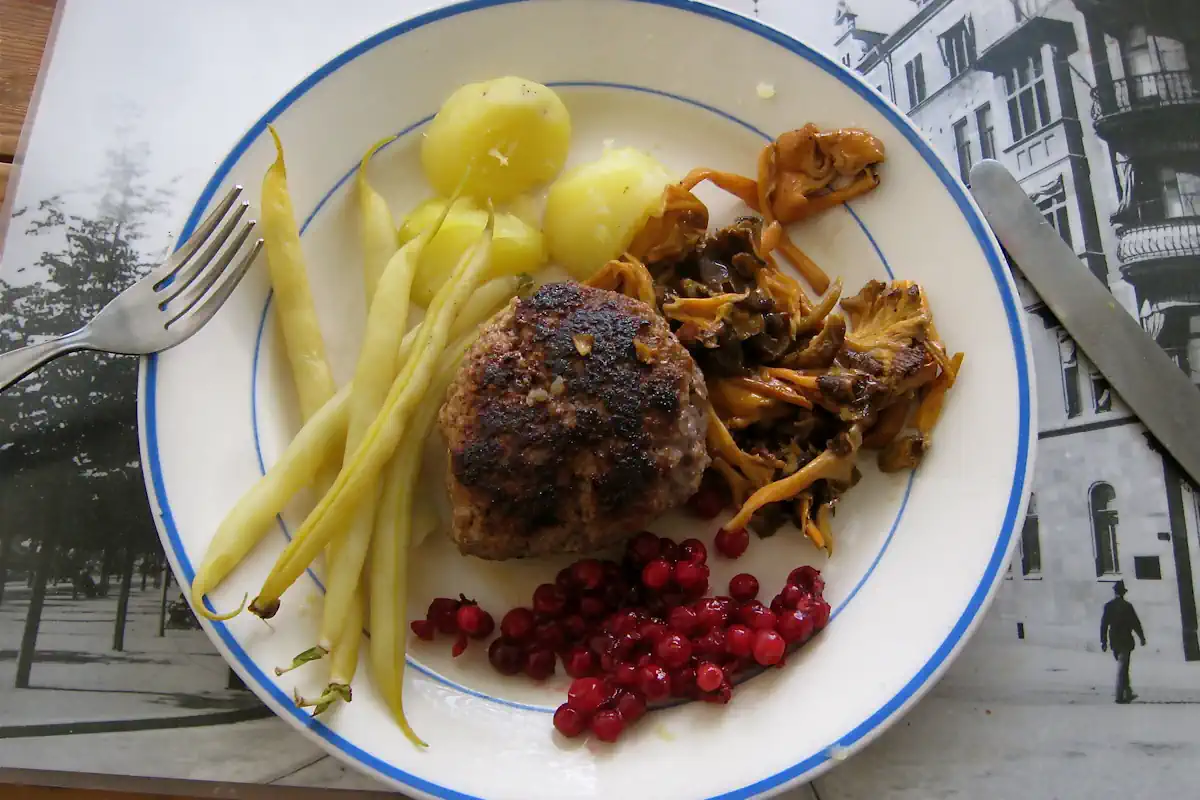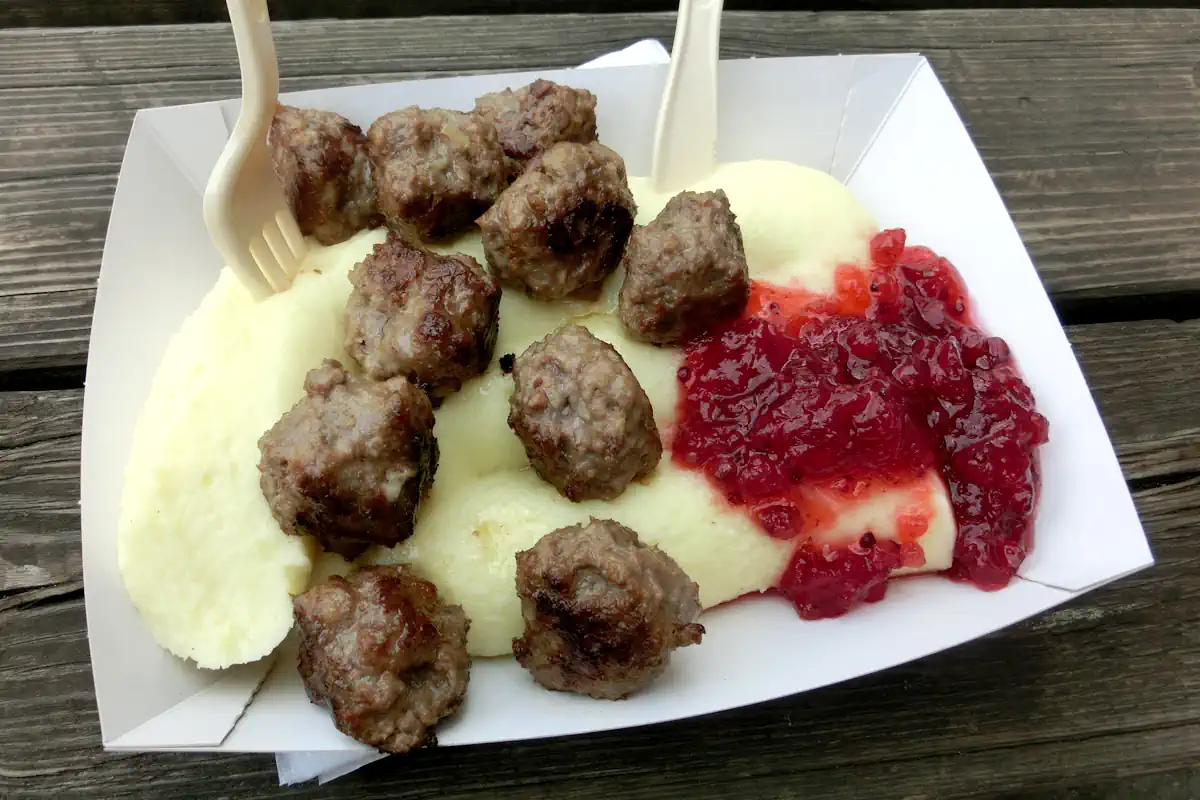 Photo: Holger.Ellgaard (CC BY-SA 3.0)
Photo: Holger.Ellgaard (CC BY-SA 3.0)
Lingon: Sweden’s beloved wild berry
Lingonberries—known as lingon in Swedish—are a vibrant symbol of Sweden’s natural landscape, cuisine, and cultural heritage. For visitors to Stockholm, discovering lingonberries offers a flavorful entry into traditional Swedish life.
What are lingonberries?
Lingonberries (Vaccinium vitis-idaea) are small, tart red berries that flourish in Sweden’s boreal forests and mountainous regions. Growing on hardy evergreen shrubs, they thrive in the acidic, nutrient-poor soils of the north and ripen in late summer—typically August through September. These resilient plants are found across Scandinavia, North America, and parts of Eurasia.


Cultural significance in Sweden
Rooted in Swedish folklore and everyday life, lingon have long symbolized endurance and harmony with nature. Before refrigeration and processed sugar, they were preserved as vattlingon—berries stored in water—thanks to their naturally high benzoic acid content. Sweden’s unique Allemansrätten (Everyman’s Right) grants public access to nature, including the right to forage lingonberries, ensuring the tradition endures.
Where and how they grow
Lingonberries thrive beneath forest canopies, particularly in dry, acidic, and sandy soils. They are most plentiful in Sweden’s inland woodlands and upland areas. Swedes often use a special berry picker, or “scrabbler,” to gather them efficiently during the short harvest season.
How Lingonberries are used
These tart berries are a culinary staple in Swedish homes and restaurants:
- Lingonberry jam: A classic accompaniment made with or without cooking (rårörda lingon), often served with hearty dishes for a sweet-tart contrast.
- Traditional pairings: A must with Swedish meatballs, potato pancakes (raggmunk), blood pudding, liver dishes, and fried herring.
- Beverages and sweets: Lingonberry-flavored syrups, juices, and schnapps. Historically, vattlingon was both a drink and a scurvy remedy.
- Festive traditions: Lingonberries feature in Christmas meals and decorations, valued for their evergreen foliage.
- Modern cuisine: Innovative Stockholm restaurants use lingonberries in desserts, sauces, and cocktails.
Lingonberries are rich in antioxidants, vitamins A and C, and minerals. Traditionally used in folk medicine for urinary tract health, they are now being studied for heart, gut, and metabolic benefits.
Nutritional value and health benefits
Similar to cranberries, lingonberries are valued for their health-promoting properties. Their bioactive compounds support digestion and cardiovascular health and may have anti-inflammatory effects.
Where to experience Lingon in Stockholm
- Restaurants: Nearly all traditional eateries in Stockholm feature lingonberry jam, particularly with meat-based dishes.
- Markets: Find a range of lingonberry products—jams, dried berries, and juices—in supermarkets and food halls.
- Cafés and bakeries: Enjoy lingonberry-infused pastries, cakes, or pancakes with a dollop of jam.
- Nature excursions: Visit a local forest during late summer and forage your own berries as part of the Allemansrätten experience.
Conclusion
Lingonberries represent more than just a fruit in Sweden—they are a taste of heritage, a touch of the wild, and a cherished part of the Swedish table. Whether enjoyed fresh in the forest or paired with meatballs in Stockholm, lingonberries offer a quintessential Swedish experience.
Visit Info
 Lingonberries
Lingonberries
 Lingon
Lingon








